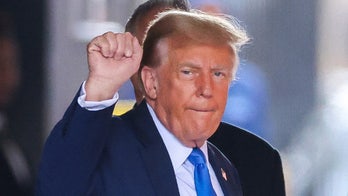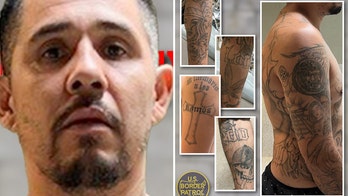Published
|
Updated
FOX News takes a look back at the history of presidential inaugurations as the country prepares for the inauguration Tuesday of Barack Obama.
Overview
- This will be the 56th quadrennial presidential inauguration.
- Obama will be sworn in as the 44th president of the United States.
- The presidential inauguration has been in existence since George Washington's first swearing-in on April 30, 1789.
- The event was elevated to federal holiday status when President Dwight D. Eisenhower signed the congressional bill into law on January 11, 1957.
General History
- The President and Vice President were inaugurated on March 4 of the year after their election from 1789 to 1933
- The 20th Amendment, ratified in 1933 and effective in 1937, changed the commencement date of the presidential term of office to January 20.
- The forefathers had chosen the date of March 4 because it took weeks to collect and count the votes, and then weeks by coach or horse for the president-elect to get to the capital.
- In a tradition dating to the 19th century, Presidents are not publicly inaugurated on Sundays.
- When January 20 falls on that day, a brief private inauguration is held, usually in the East Room of the White House, with a public ceremony the next day.
- President Reagan was privately installed for his second term on Sunday, January 20, 1985 and publicly inaugurated on Monday, January 21.
Inaugural Address
- The custom of delivering an address on Inauguration Day started with the very first Inauguration — George Washington's — on April 30, 1789.
- Every President since Washington has delivered an Inaugural address.
- While many of the early Presidents read their addresses before taking the oath, current custom dictates that the Chief Justice of the Supreme Court administer the oath first, followed by the President's speech.
- William Henry Harrison delivered the longest Inaugural address, at 8,445 words, on March 4, 1841 — a bitterly cold, wet day. He died one month later of pneumonia, believed to have been brought on by prolonged exposure to the elements on his Inauguration Day.
- In 1921, Warren G. Harding became the first President to take his oath and deliver his Inaugural address through loud speakers.
- In 1925, Calvin Coolidge's Inaugural address was the first to be broadcast nationally by radio.
- And in 1949, Harry S. Truman became the first President to deliver his Inaugural address over television airwaves.
Weather
- Ronald Reagan's 1981 inauguration took place in 55-degree temperatures, while his 1985 swearing-in was moved into the Capitol when the temperature dipped to seven degrees.
- Franklin D. Roosevelt's 1937 inauguration was marked by record rain.
- Eight inches of snow fell the night before John Kennedy's 1961 inauguration.
- Both incoming President William Henry Harrison and outgoing First Lady Abigail Filmore developed pneumonia and died within a month of the 1841 inauguration, which was held on a cold, windswept day. It didn't help that Harrison gave a 100-minute Inaugural Address.
- The worst inaugural weather was probably in 1909 when 10 inches of snow fell in Washington. Streets were clogged and trains stalled — and that was in March.
- No matter how awful the weather may be this year, the Secret Service isn't allowing spectators to bring umbrellas to the swearing-ceremony on the Capitol's West Front or onto the parade along Pennsylvania Avenue.
Inaugural Balls
- Americans threw a party to honor George Washington one week after his inauguration on May 7, 1789.
- The tradition of a ball began in 1809 when James Madison was inaugurated in Washington.
- Dolley Madison, the first lady, hosted the party for which 400 tickets were sold at $4 apiece.
- Organizers for Dwight D. Eisenhower's 1953 Inaugural ball added a second event due to the great demand for tickets. Four years later, Eisenhower's second Inauguration featured four balls.
- Kennedy attended five in 1961.
- President Carter attempted to strip the balls of their glitz and glamour in 1977, calling them parties and charging no more than $25 each
- In 1989, when George H. Bush became President, the number of balls reached eleven.
- Fourteen balls capped the day's activities for the Clinton's in 1997.
- George W. Bush's inaugural in 2001 saw the number of official balls decline to eight, and his 2nd inaugural in 2005 was celebrated with nine official balls.
Inauguration Firsts
- In 1789, George Washington pronounced the words, "So help me God" after taking the oath; other presidents have followed this example.
- In 1793, George Washington gave the shortest inaugural address: 135 words.
- James Buchanan's 1857 inaugural was the first inaugural known to have been photographed.
- William McKinley's 1897 inaugural was the first to be recorded by movie camera.
- Warren G. Harding, in 1921, was the first president to ride to and from his inaugural in an automobile.
- Calvin Coolidge's 1925 inaugural was the first to be broadcast nationally by radio.
- Franklin D. Roosevelt, in 1937, was the first president to be inaugurated on the January 20th date.
- Harry S. Truman's 1949 inauguration was the first inauguration to be televised.
- In 1961, John F. Kennedy was the last president to wear traditional stovepipe hat to the inauguration.
- In 1977, Jimmy Carter walked from the Capitol to the White House with his family after ceremony.
- Ronald Reagan's 1981 inaugural was the first to be held on the West Terrace of the Capitol.
- In 1985, Reagan's swearing-in ceremony was moved to the Capitol Rotunda due to freezing weather
- Clinton's 1997 inauguration was the first ceremony to be broadcast live on the Internet.
- In 2001, George W. Bush inauguration was interrupted by two naked protesters.
Compiled by the FOX News Brainroom.




